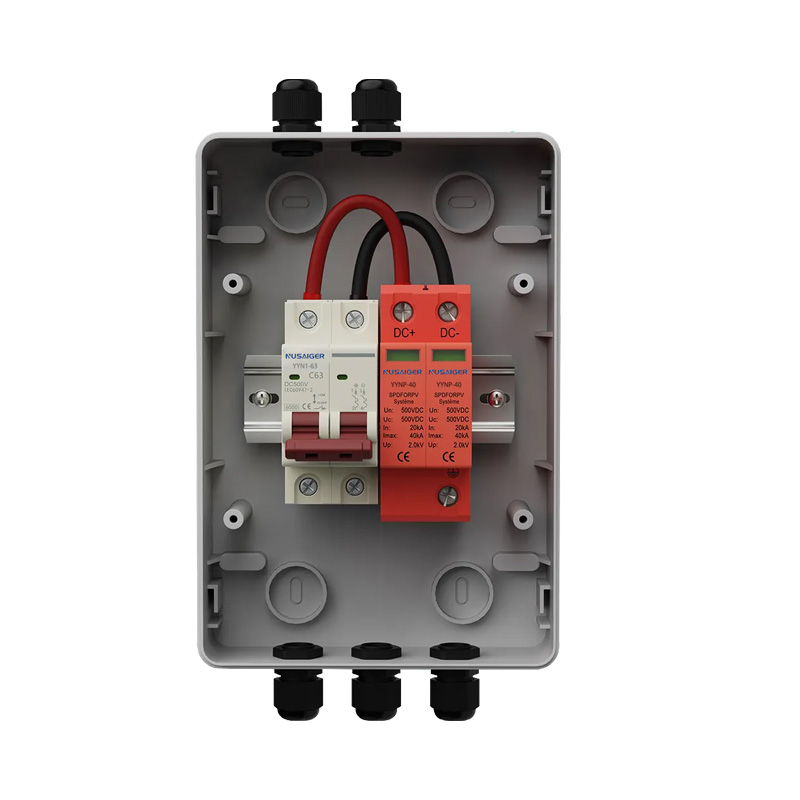The Impact of Surge Protection Devices in PV Combiner Boxes on System Longevity
Surge Protection Devices (SPDs) are crucial components integrated into photovoltaic (PV) combiner boxes to safeguard solar power systems from transient overvoltages caused by lightning strikes, switching operations, and other electrical disturbances. These sudden voltage spikes can damage sensitive electronic components, reduce system reliability, and cause costly downtime.
1. Why Are Surge Protection Devices Necessary?
PV systems are often installed in open environments, making them vulnerable to lightning-induced surges and grid disturbances. Without SPDs, these surges can travel through the DC cables, damaging solar panels, inverters, and monitoring equipment. The inclusion of SPDs in combiner boxes acts as the first line of defense, diverting harmful surges safely to ground.
2. Types of Surge Protection Devices in PV Combiner Boxes
Common SPD types used include Metal Oxide Varistors (MOVs) and Gas Discharge Tubes (GDTs). MOVs clamp voltage surges by changing resistance during high-voltage events, while GDTs provide a spark gap to safely discharge surges. Some advanced SPDs combine both technologies for enhanced protection.
3. Key SPD Specifications for PV Applications
- Maximum Continuous Operating Voltage (MCOV): The maximum voltage the SPD can handle continuously without degradation.
- Nominal Discharge Current (In): The current level the SPD can safely divert during a surge event.
- Voltage Protection Level (VPR): The voltage level at which the SPD activates to clamp the surge.
4. Installation Best Practices
SPDs should be installed as close as possible to the point where cables enter the combiner box to minimize the length of wiring exposed to surges. Proper grounding is essential to ensure surge currents are safely diverted into the earth. Regular inspection and maintenance of SPDs help identify degradation or failures.
5. Benefits of Integrating SPDs in PV Combiner Boxes
- Prolonged Equipment Lifespan: By mitigating damaging voltage spikes.
- Improved System Reliability: Reducing unexpected failures and downtime.
- Compliance with Standards: Many electrical codes require surge protection in PV systems.
- Cost Savings: Avoiding expensive repairs and replacements.
6. Common Challenges and Solutions
Choosing the right SPD requires understanding the site-specific surge risk, system voltage, and current ratings. Over-sizing or under-sizing SPDs can cause inefficiency or premature failure. Collaborating with manufacturers and electrical engineers ensures proper selection and integration.
Conclusion
Incorporating surge protection devices within PV combiner boxes is a critical strategy for enhancing the longevity and reliability of solar power installations. By effectively managing transient overvoltages, SPDs safeguard vital system components, reduce maintenance costs, and ensure continuous clean energy production.



